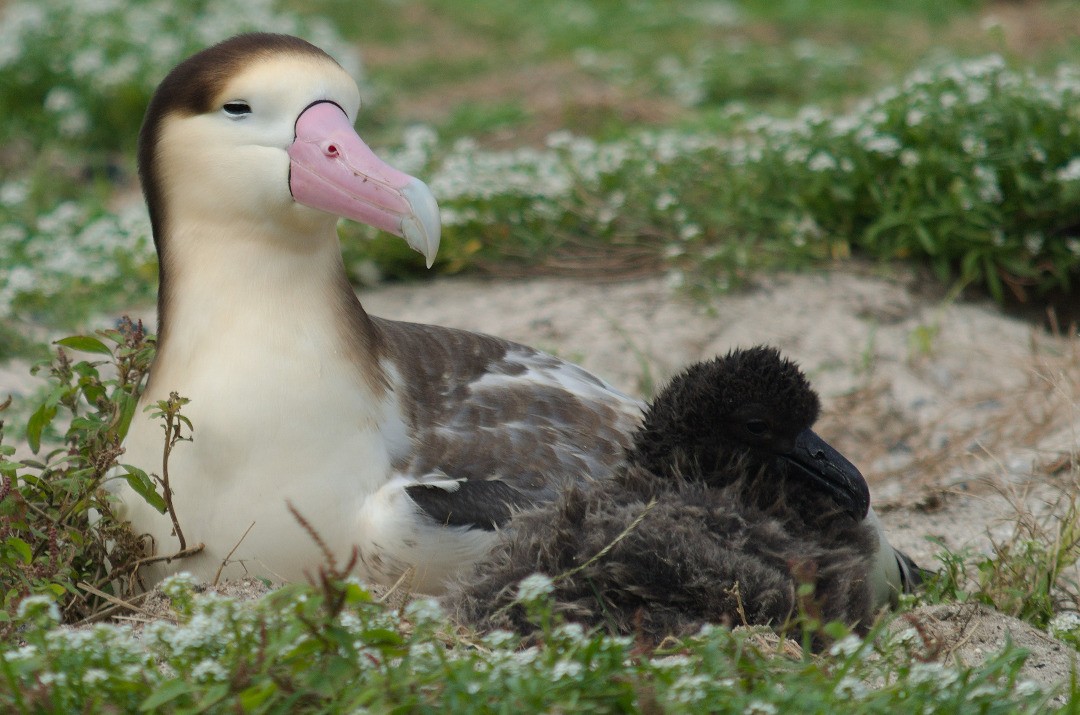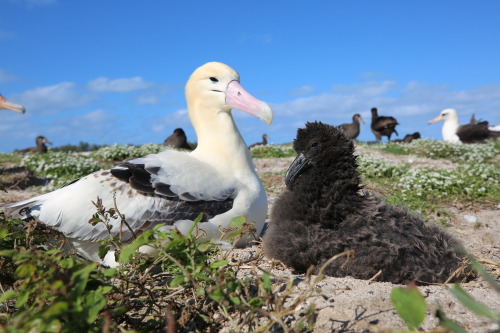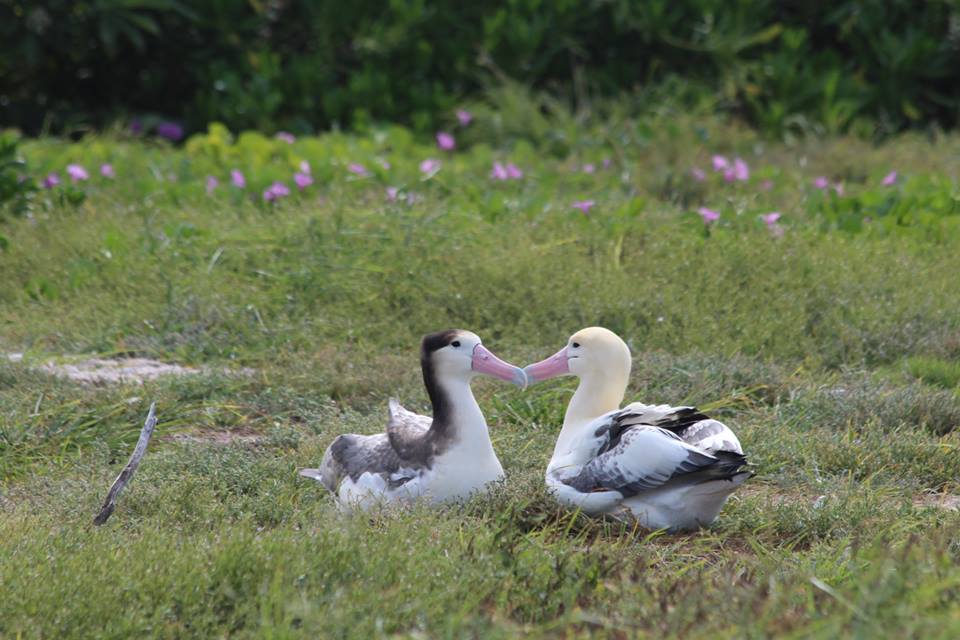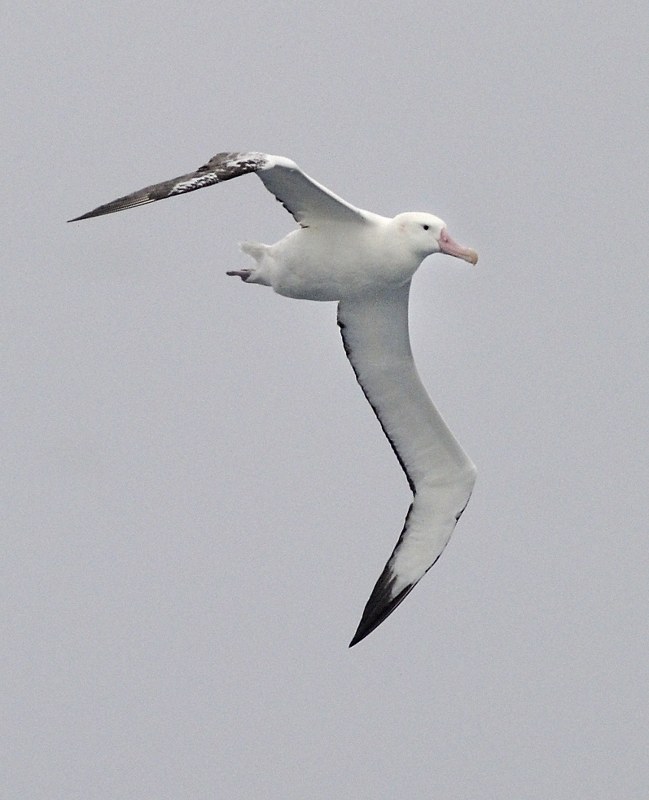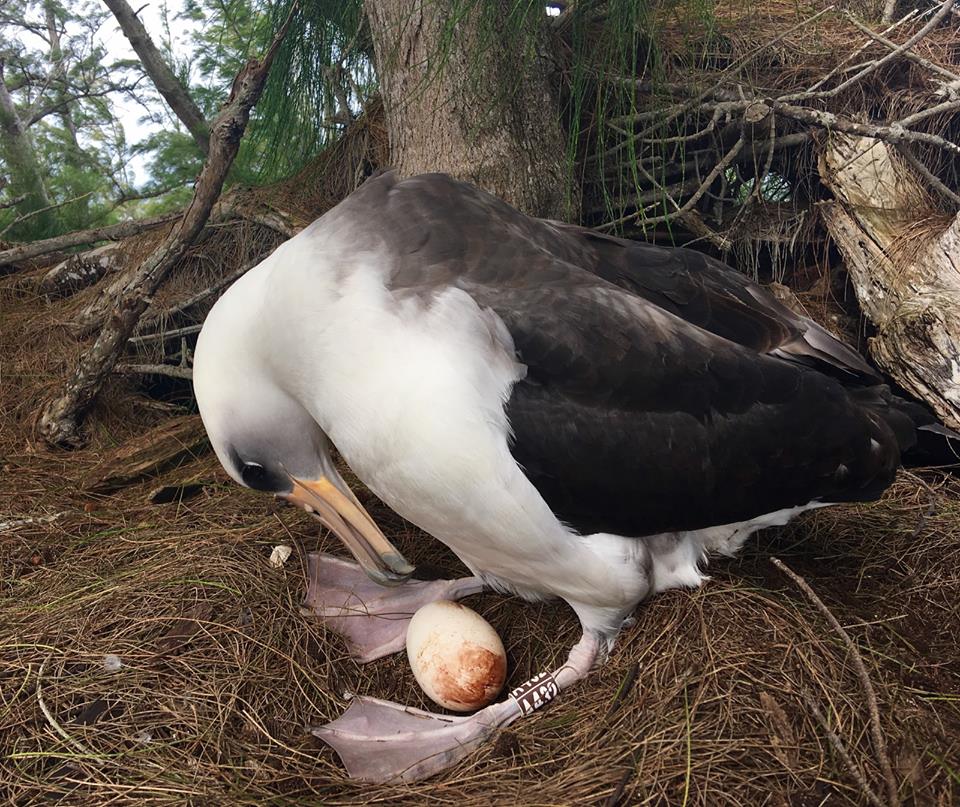An Indian Yellow-nosed Albatross Thalassarchi carteri was photographed ashore after first being seen in fllght on Gough Island in the South Atlantic on 17 January this year, resting among breeding Atlantic Yellow-nosed Albatrosses T. chlororhynchos - from which it was distinguished by its paler head, as well as by other diagnostic features. This is the first record of the globally Endangered species for Gough, far from its breeding grounds on French and South African sub-Antarctic islands in the southern Indian Ocean (click here).

The vagrant Indian Yellow-nosed Albatross ashore on Gough Island, 17 January 2019; despite efforts to resight and band, it has not been seen again
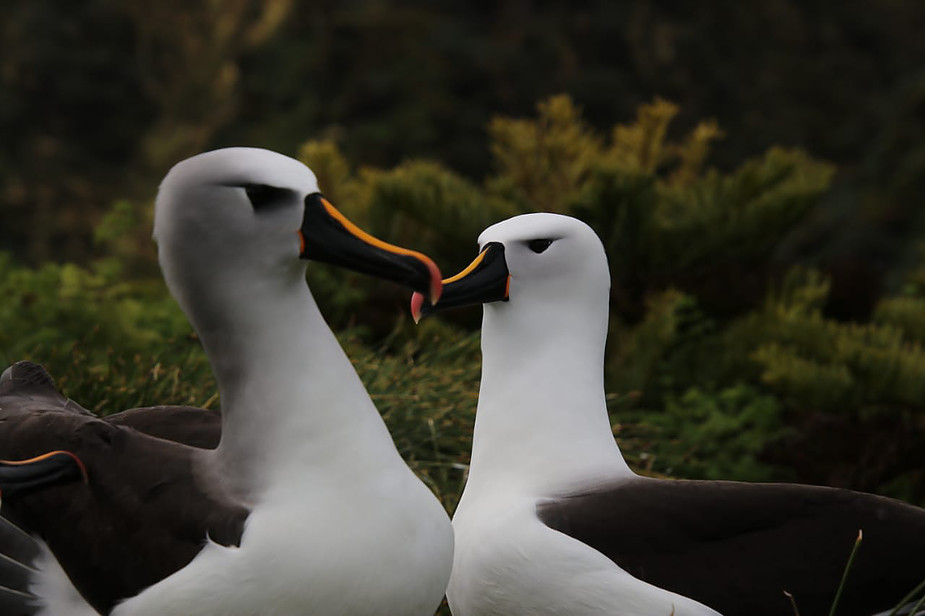
The vagrant Indian Yellow-nosed Albatross with its paler head is on the right, next to an Atlantic Yellow-nosed Albatross. On landing it engaged in bill fencing with an Atlantic Yellow-nosed but no other displays were noted
Photographs by Christopher Jones
A recent review of breeding-site vagrancy in albatrosses did not include any records for the Indian Yellow-nosed Albatross. Fledglings from South Africa’s Prince Edward Island (and at least two adults) have been occasionally seen ashore away from albatross colonies on nearby Marion Island, where they do not breed (click here). The 2007 Tristan-Gough field guide lists the species only as a “possible vagrant”. However, more recently it has been reported that Indian Yellow-nosed Albatrosses have “been spotted around Tristan da Cunha at sea” (click here)
Read more here.
With thanks to Chris Jones and Michelle Risi for information and use of photographs.
References:
Phillips, R.A., Cooper, J. & Burg, T.M. 2018. Breeding‐site vagrancy and hybridization in albatross. Ibis 160: 907-913.
Ryan, P.G. (Ed.). 2007. Field Guide to the Animals and Plants of Tristan da Cunha and Gough Island. Newbury: Pisces Publications. 162 pp.
John Cooper, ACAP Information Officer, 11 February 2019, updated 13 February 2019

 English
English  Français
Français  Español
Español 
